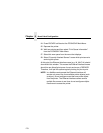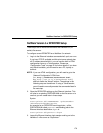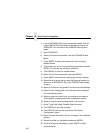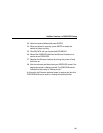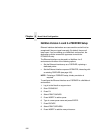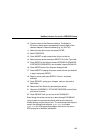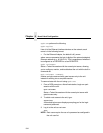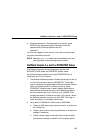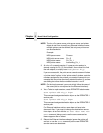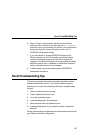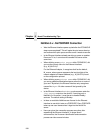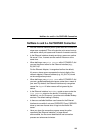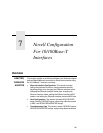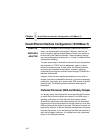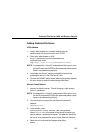
Chapter 6 Novell Host Configuration
186
NOTE: The
4.
x
or 5
.x
queue name, print server name, and printer
object do not have to match any Ethernet Interface name;
multiple printers can be defined, but only one print server
can be attached to.
Example:
NDS queue name: Finance
NDS print server name: Fin_Q
NDS printer name: Fin_Prt_1
NDS printer name: Accounting_Prt_1
3. At a
4.
x
or 5
.x
console session, if a pserver.nlm session is
already running for Fin_Q, first unload it, then reload it to find
the new objects, or simply issue
load pserver Fin_Q
.
If you are successful, the print server console screen will show
a “printer status” option. In the “printer status” window, note the
numbers assigned to the printers you created. Assume for our
example that one printer previously existed (number 0), and we
are adding two more whose numbers became 1 and 2.
NOTE: On the load command, you must strictly follow the case of
the name (this is not required on the Ethernet Interface).
4. Via a Telnet or npsh session, create RPRINTER attachments:
store rprinter add Fin_Q 1 d1prn
This command assigns destination d1prn as the RPRINTER 1
service path.
store rprinter add Fin_Q 2 d4prn
This command assigns destination d4prn as the RPRINTER 2
service path.
For Ethernet Interface entries, case does not have to be
observed. Also, if you want to change the destination names
from d
x
prn, do so first with the
set dest <dest> name <new
name>
command, being sure to use the save command so
these reappear after a reboot.
5. Reboot the Ethernet Interface adapter (power the printer off
and on, or use the
reset
command) so the new RPRINTER
service names are broadcast.



